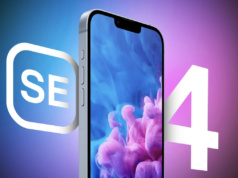Apple’s drive for greater independence in component manufacturing is set to take a major leap with the iPhone 17, expected to launch in fall 2025. According to well-known Apple supply chain analyst Ming-Chi Kuo, the tech giant will be equipping its upcoming flagship model with an in-house designed Wi-Fi 7 chip, a significant move away from reliance on external suppliers such as Broadcom. This transition not only highlights Apple’s dedication to controlling its supply chain but also reflects strategic steps to optimize both cost efficiency and long-term profit margins.
Apple Moves Toward In-House Connectivity Solutions
The new Wi-Fi 7 chip is poised to replace the Broadcom components that Apple currently uses for both Wi-Fi and Bluetooth functionalities. Designed and engineered entirely by Apple, this chip is reported to be built using Taiwan Semiconductor Manufacturing Company’s (TSMC) 7-nanometer process technology. The adoption of in-house wireless solutions represents a notable pivot in Apple’s strategy, as the company aims to integrate almost all of its products with custom-made connectivity hardware within the next few years.
By manufacturing its own wireless chips, Apple aims to reduce costs associated with outsourcing and dependency on third-party providers. This approach has the dual benefit of allowing for more refined customization of wireless performance across its devices while boosting profit margins. The transition to self-designed chips will likely improve the integration of hardware and software, further enhancing the seamless experience for which Apple products are renowned.
Advantages of Wi-Fi 7 Technology
The introduction of Wi-Fi 7 will bring substantial upgrades to the iPhone 17, setting new standards in wireless performance. Wi-Fi 7 technology, still in development, is anticipated to deliver faster speeds, higher data capacity, and improved efficiency compared to the current Wi-Fi 6 and 6E standards. It will also feature advanced multi-link operation (MLO), which allows the device to connect simultaneously to multiple frequency bands, enhancing reliability and reducing latency—an essential feature for streaming, gaming, and handling data-intensive applications.
Furthermore, the adoption of this next-generation technology aligns with Apple’s commitment to future-proofing its products. As demand for high-speed, low-latency connectivity continues to grow, especially with the proliferation of smart home devices and augmented reality applications, the move to Wi-Fi 7 will give Apple a competitive edge.
Separate 5G Chip Development Underway
In addition to the in-house Wi-Fi 7 chip, Apple is making strides toward developing its own 5G modem. Unlike the Wi-Fi chip, the 5G modem will be created using a different TSMC process technology and is set to be rolled out gradually starting in 2024. The first device expected to showcase Apple’s proprietary 5G modem is the upcoming iPhone SE, which will serve as a testbed for this new technology. However, even this iteration will continue to rely on Broadcom for its Wi-Fi capabilities, marking a phased approach to complete self-sufficiency.
This gradual introduction of an Apple-designed 5G modem reflects the complexity of creating high-performance cellular chips. Apple’s ambition to gain full control over both Wi-Fi and cellular connectivity hardware is part of a broader strategy to streamline its supply chain and reduce reliance on established industry suppliers. This could also have significant implications for the mobile industry, particularly for companies like Qualcomm and Broadcom, who have traditionally supplied Apple with key components.

The Economic and Strategic Implications
Apple’s in-house chip development isn’t just a technological maneuver; it carries substantial economic and strategic implications. Manufacturing chips in-house can provide considerable cost savings, which Apple can reinvest into research, development, or other areas. Additionally, creating custom silicon allows Apple to optimize energy efficiency and performance, making its products even more attractive to consumers.
By working closely with TSMC, one of the world’s most advanced chip manufacturers, Apple gains access to cutting-edge fabrication technologies. The 7-nanometer process used for the Wi-Fi 7 chip, for instance, is known for balancing performance with energy efficiency, a crucial factor for mobile devices where battery life is paramount.
The shift toward proprietary chips is also part of Apple’s broader strategy to insulate itself from supply chain disruptions. The global semiconductor shortage of recent years underscored the vulnerabilities inherent in relying on external suppliers. Apple’s move to develop more components in-house will provide greater control over production timelines and reduce the risk of delays.
Impact on the Broader Industry
Apple’s decision to design its own Wi-Fi and 5G chips could ripple through the industry, particularly affecting component suppliers like Broadcom and Qualcomm. These companies have enjoyed lucrative contracts with Apple, and losing even a fraction of that business could have financial consequences. However, Apple is not expected to sever ties with these suppliers entirely. The transition will likely be gradual, giving both Apple and its partners time to adjust.
Moreover, Apple’s investment in custom wireless solutions sets a precedent for other technology firms. As competition intensifies, companies may seek similar levels of integration to differentiate their products. Apple’s strategy could influence the broader market, pushing other manufacturers to prioritize in-house chip development or seek out alternative partnerships.
Challenges and Considerations
While the benefits of developing custom chips are evident, the process comes with its own set of challenges. Designing high-performance wireless chips is no small feat, requiring significant research, development, and testing. Any hiccups in this complex process could delay product launches or result in performance issues. Apple has demonstrated its capability with the successful rollout of its M-series chips for Mac computers, but applying the same approach to connectivity hardware presents unique hurdles.
Additionally, regulatory approval may be another obstacle. Wireless communication technologies are subject to stringent regulations across the globe, and Apple’s new chips will need to meet various international standards. The company’s ability to navigate these regulatory landscapes will be critical to the successful deployment of its custom connectivity solutions.
A Bold Step Forward
Apple’s shift to using its own Wi-Fi 7 chip in the iPhone 17 is a bold and forward-thinking move that underscores its commitment to innovation and independence. By reducing reliance on external suppliers and developing custom wireless solutions, Apple aims to enhance the performance and efficiency of its products while securing greater control over its supply chain. As the tech giant continues to innovate, all eyes will be on the impact these advancements have on both its products and the broader industry.
The iPhone 17, with its proprietary Wi-Fi 7 chip, is expected to set a new benchmark in wireless connectivity, reaffirming Apple’s position as a leader in the tech world. As the fall 2025 launch date approaches, the excitement surrounding this next-generation device is only expected to grow.






